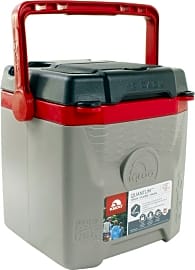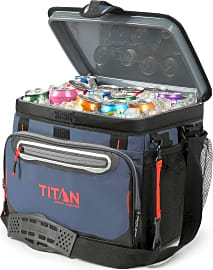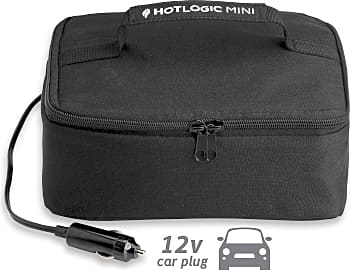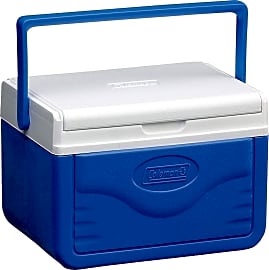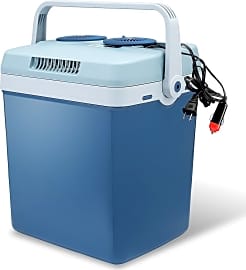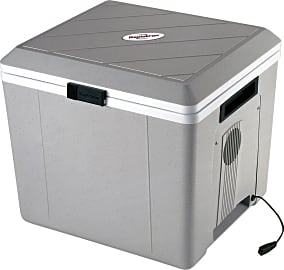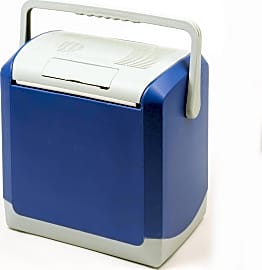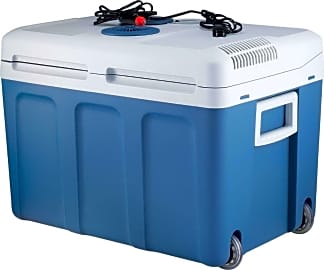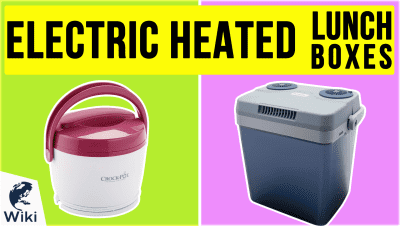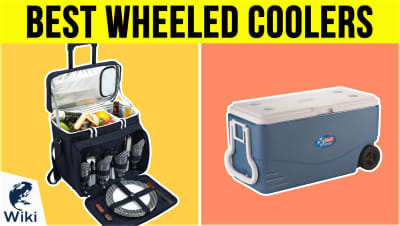The 10 Best Car Cooler/Warmers

This wiki has been updated 34 times since it was first published in September of 2016. If you're going on a road trip with your family or just spend a lot of time in your car, the ability to store food in your vehicle is a great way to save time and money - not to mention avoid unhealthy fast food. These car coolers and warmers come in a variety of sizes and designs, so whether you're on a cross-country drive or are a long-haul trucker, you'll find an option that works best for you. When users buy our independently chosen editorial picks, we may earn commissions to help fund the Wiki.
Editor's Notes
April 28, 2020:
For this update, we removed the Knox Gear 48, the SOAC Thermoelectric, Gourmia GMF660, Cooluli Mini-Fridge, Housmile Thermo, and the Chefman Portable. These were all electric models that received numerous complaints regarding their effectiveness and low-quality construction.
To add a wider variety of non-electric coolers, we added four new options, including the Arctic Zone Titan. This cooler is large enough to pack with food for the whole family, and its design makes it very car-friendly. Though it has a soft exterior, it also features a solid interior liner that keeps melted ice from leaking. Unlike other soft-sided coolers that require unzipping every time you want to get inside, the Arctic Zone Titan has a regular solid lid, allowing you to get inside quickly and easily.
We also added two options that are strictly designed to be used as warmers. These have no cooling ability, but are still a great option if you’re just looking to reheat leftovers from home or refrigerated food items you purchased at a gas station or grocery store. The Alfredx Portable is nice and big, and would be ideal for a trucker who has a bit more room to spare in the cab.
We kept four of the electric models that are designed to both cool and warm food, but they need to be carefully considered before purchase. Outside air temperature can have a big effect on their ability to cool things down effectively, so they tend to work better in colder environments. Make sure to read about their individual temperature ranges, since some may not get cold enough for storing perishables like meat or cheese, and would be better suited for cooling down drinks or other non-perishable foods.
If you're interested in taking your food to your destination when you arrive, perhaps an electric heated lunch box would be even more convenient for you.
Everything Is Better With Food
An additional benefit of the warmer/cooler is that, for keeping food and beverages cold, you don’t need to use any ice.
Everyone enjoys a nice outing, whether to the beach, the park, or a tailgating extravaganza. It’s important to be able to get away from our day-to-day lives on a regular basis in order to refresh ourselves and load up on the energy, both physical and psychological, that it takes to head back to work the top of the week.
And while things like the water at the beach, the nature at the park, and the party vibes at the tailgate are usually the main attractions of any such outing, good food and drink is guaranteed to elevate your experience. The problem, of course, is that good food and drink comes in a wide range of temperatures, with cool beverages having a particularly profound effect on a hot day, and a warm meal satisfying like nothing else when the sun goes down and the temperature drops.
To that effect, you want to make sure that you have what it takes to provide you and your loved ones with refreshments that are the ideal temperature in any given scenario. Traditionally, the best you could do to achieve this would be to bring a cooler along with you, keeping all of your food cold until it was time to consume. If you had anything that had to be served hot, you have to find a way to heat it up before you could eat.
Now, however, with a car warmer/cooler, you can bring all of your favorite foods with you, keeping the cold stuff cold or the hot stuff how with the help of active electrical heating and cooling elements. Of course, any of these devices can only be set to heating or cooling at a given moment, so if you need to bring hot and cold items to location, you might need more than one unit.
An additional benefit of the warmer/cooler is that, for keeping food and beverages cold, you don’t need to use any ice. Ice has a nasty tendency to melt, and when it does it turns back into water, which can very quickly ruin a variety of foods if they aren’t properly packed. Some people like to use ice packs to get around this, but both ice and ice packs share the problem of taking up space. The units on our list, however, don’t sacrifice any internal space to ice or ice packs, allowing you to maximize the amount of stuff you can carry.
The Best Car Cooler/Warmer For You
Car cooler/warmers come in a pretty wide variety of shapes and sizes to suit vehicles and families of different sizes and needs. The first thing that you were going to want to do to make sure that you end up with the right model is to take stock of how much food or drink you’re going to need to transport on a regular basis. There are tiny models that are ideal for transporting a hot breakfast to the office, as well as enormous models that look like some of the biggest coolers available on the market, and that can hold enough food and drink to serve a large party of people.
Pay close attention to the specific capacity is laid out by each unit’s manufacturer.
If you find a model that you particularly like, but that’s right at the limit of what you’ll typically be transporting, it might be smart to look for something with a little more room inside. Overfilling a cooler or warmer will likely make it so that the materials inside or in to evenly or sufficiently cared for.
Pay close attention to the specific capacity is laid out by each unit’s manufacturer. These are definitely hard maximums that you do not want to exceed, or you risk certain perishable food spoiling before you eat them, which could result in unpleasant flavors or, in the worst case, a bad case of food poisoning.
Next, take a look at how a given model is designed to be carried. Some units have handles that come over the lid and allow you to tote them along in one hand, where others place a pair of smaller handles on the sides, which will force you to use two hands in carrying them. Others may include straps or wheels so you can sling them on your shoulder or roll them along the ground, while still others have no handles to speak of.
Models without handles are more intended to live in your vehicle and provide you with cold or hot foods or drinks throughout the duration of a long road trip. These look more like miniature refrigerators that just happen to plug into your car’s cigarette lighter than anything else, and have doors that open out as such.
A Brief History Of Cooling
For the better part of human history, we did not have the ability to manufacture ice. If we wanted to get our hands on the cold stuff, we either had to wait for winter to roll around, or we had to ship it from a climate where it naturally occurred. This became an industry unto itself, with fleets of ships devoted to nothing else but harvesting ice in the northern latitudes in sailing it south for everything from use in restaurants to door-to-door sales.
If we wanted to get our hands on the cold stuff, we either had to wait for winter to roll around, or we had to ship it from a climate where it naturally occurred.
In the home, blocks of ice were often used to lower the temperature inside what are known as iceboxes. These were essentially refrigerators without the refrigerant, as they sealed an environment off from the temperatures outside and allowed the large blocks of ice within to distribute cooler temperatures throughout.
Experiments in refrigeration technologies saw major breakthroughs in the 18th and 19th centuries, but it wasn’t until the turn of the 20th century that manufacturers were able to put devices together that they could market on an industrial scale. It would be another couple of decades before refrigerators for home use became available, with mass production and a significant increase in interest among consumers coming along in the years after World War II.



